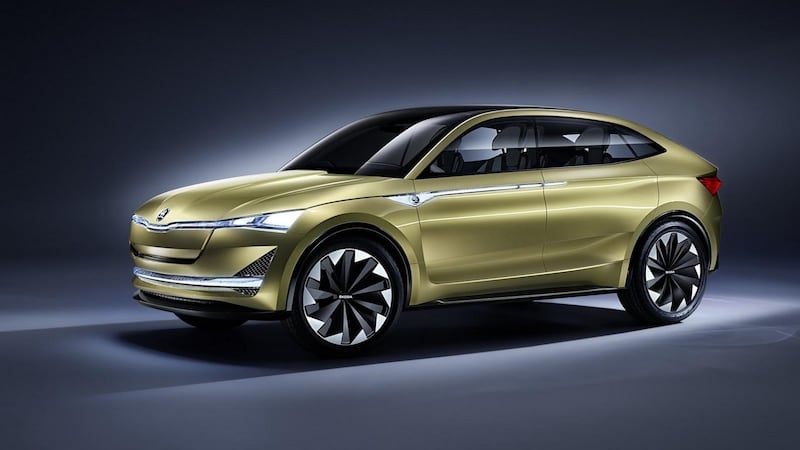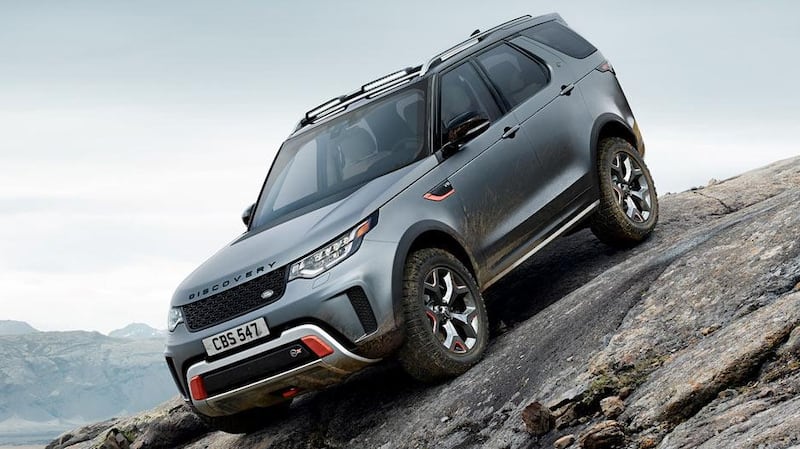The world’s motor shows have been in low-key mode for the past two years ever since the so-called “dieselgate” scandal broke, with car makers metaphorically keeping their heads down and trying to avoid awkward questions about emissions.
That seems to have changed for this year’s Frankfurt motor show, as both Volkswagen and Mercedes came straight out of the traps with supercars and electric promises.
VW's electric plans in particular make for some pretty exciting reading. The Roadmap-E plan, as outlined by VW's Chairman of the Board Matthias Müller will see every VW Group model range, from Skoda to Bugatti, have at least the option of a full-electric or hybrid version by 2030.
That’s eight-to-ten years behind the promises of several rivals, but when you look at the detail, you can see why.

“With ‘Roadmap E’, we are opening up a new chapter in our Group’s history. And setting the scene for e-mobility’s final breakthrough. Then it is up to customers to decide how fast it will gain widespread acceptance,” explained Müller.
He spoke of an investment of €20 billion between now and 2030, and the possible construction of four massive factories, each dedicated to the production of the lithium-ion batteries that these cars will need.
"For us, the transformation of transportation and the energy transition are inseparable. And creating a comprehensive charging infrastructure rapidly – in cities and on highways – will be critical to success. In Europe, and particularly in the automotive stronghold of Germany, much more needs to be done.
Only then will customers’ trust grow” said Müller. “And only then will electric cars come out of the niche – and achieve relevant market share in years to come. I’m convinced this will succeed if politicians, the energy industry and automakers work in harness.”
Skoda’s vision
Alongside Audi's fully autonomous and partially autonomous (respectively) Aicon and Elaine concepts (note the use of the letters AI in both names) and the ID Crozz concept, the Group also showed off the Skoda Vision E. Like the VW ID Crozz, the Vision E has already been seen, at the Shanghai motor show, but has been tweaked and updated for Frankfurt.
A rake-roofed SUV coupe, the Vision E is now closer to production reality than it was, and uses the same 300hp electric 4WD powertrain as the ID Crozz. It’s also a big preview of how future Skodas will look.

In the meantime, pretty much all car makers agree, people’s expectations will have to be managed. Electro-mobility is certainly coming, but it will be close to a decade before the price of an electric car comes down to match that of a conventional petrol or diesel model.
And many of those petrol and diesel models will have to be sold to fund the development of the electric future.
Mercedes cost cutting
Mercedes, even as it launched its staggering 1,000hp Project One hypercar, sounded a note of caution over the cost of that investment. Profit margins will inevitably reduce as electric cars begin to take over on forecourts. Mercedes has also revealed its intention to offer electric or hybrid versions of all its cars by 2022, on a similar timeframe to that of BMW and Volvo.
However, the company has also said that it expects profits to dip as more and more electric cars are added to its sales mix, and is seeking €4 billion in cost savings until electric car production costs reach equilibrium with those of conventional cars.
It does not expect that to happen until 2025. Some €1 billion of the savings will have to come from fixed costs, with another billion from R&D. The remaining €2 billion will come from production costs, such as outsourcing more component production to outside suppliers.
"In the beginning of the cycle we believe that we will have to face a significantly lower margin. For some vehicles half of the margin of the vehicles they replace," Frank Lindenberg, vice president of finance and controlling at Mercedes-Benz.
Kia’s Ceed
Away from the electric revolution, both Kia and Land Rover are showing off rather more conventional new vehicles. The Proceed Concept (and yes, Kia seems to have at last abandoned the torturous punctuation of the old model) is a preview both of the styling of the upcomcing new Ceed hatchback, and a peek at what Kia has planned for the next-generation Proceed.
Expectations are that the next Ceed will will a range of variants, not simply a family hatchback.
The new styling seems to be adopting the look of the firm's hot new coupe saloon, the Stinger. This is aiming to take on the likes of the Audi A5 and BMW 4-Series. To some that might seem a massive leap for the Kia brand, but no one in the motor trade underestimates the power and potnetial of the Koreans these days.
Gregory Guillaume, chief designer in Europe for Kia Motors, said that "with many European drivers now seeking performance alternatives to the three-door hot hatch, we began thinking about a different halo model for the Ceed family."
The sleek bodywork has no b-pillar behind the drivers’ door, giving it an even more rakish profile, while the bodywork has been sculpted to create a ‘sharkblade’ effect along the side.
Hardcore Disco
Definitely going into production is the Land Rover Discovery SVX. While sister brand Jaguar spent last week showing off its electric car credentials and announced a plan for both brands to introduce electric and hybrid options to all models by 2020, the SVX is very much a traditional Land Rover, and a hardcore off-roader. It uses a 525hp supercharged V8 engine (not a battery in sight beyond the ignition system…) and specially-designed hydraulic-and-air suspension for maximum off-roading ability. Specific off-roading software and exterior metal and orange accents are also new to the Discovery, and while Land Rover calls the SVX a "production preview' it's all but certain to find its way onto the Discovery price list.

Want something even more conventional than that? Ford will launch its heavily updated Mustang for Europe at Frankfurt, complete with a revised 5.0-litre V8 engine which sees its power boosted to 450hp (although, oddly, the 2.3-litre turbo EcoBoost engine has lost 20hp somewhere in the course of this facelift).
There’s mildly tweaked exterior styling, new colours, a ten-speed automatic gearbox option, and a new ‘Drag Strip’ mode that offers maximum standing-start acceleration. There is a hybrid Mustang coming at some point, but for now it remains resolutely analogue.










